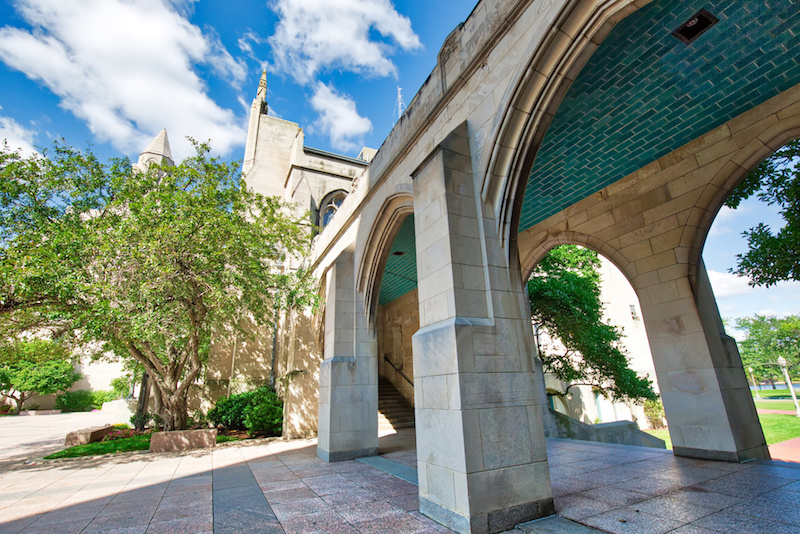A friend of mine owns a restaurant that closed after the governor of Maryland ordered non-essential businesses to close and for no one to assemble in groups of more than 10 people. His situation is not unique: in any city or state with similar emergency regulations, the only restaurants open provide carryout.
Because of our friendship and my background in finance, he asked me if I would help him build a set of projections to reflect the restart of his business. Building the spreadsheet was not difficult, since he had detailed historical financials by month going back years.
The difficult part was dealing with the uncertainty of when the business would be allowed to reopen. Would there be restrictions on the number of diners allowed at any time? Would the coronavirus cycle back and create another period of closure?
We’re still thinking about those uncertain issues, and he’s not the only restauranteur in America going through this problem. The restaurants that have benefited during this period have been those with substantial carryout operations and customers. It’s likely that some of them have increased their revenues during this period.
When I consider the current situation for America’s colleges and universities, there are similarities and dissimilarities. The similarity is that the residential colleges and universities closed their campuses and asked students and faculty to go online for the rest of the semester.
The dissimilarity is that the students were in the middle of a term. Unless they were willing to withdraw from the spring term and forfeit some or all of their tuition and room and board, they had to continue to be customers from a distance and complete the term. The restaurants without carryout had to close their doors and forego any revenue until they are able to reopen, so closure was a bigger impact for restaurants in the short term.
However, the biggest similarity for colleges, universities, and restaurants may be the uncertainty regarding the lifting of the social distancing rules, restrictions on size of groups permitted to gather, and when will the coronavirus cycle back again. Already, Boston University has announced that it is considering not opening for the fall term and moving the academic year to a January to August term.
BU may have been the first, but several others have announced they are evaluating their options as well. Just like my restauranteur friend, leaders of residential colleges and universities are in a bind because with these many uncertainties, the only certainty is that reopening their institutions will not be “back to business as usual.”
The abrupt move by our residential colleges and universities to complete the spring semester online has already triggered lawsuits related to refund policies for room and board as well as for the “lower touch experience” that does not appear to be worth the higher tuition charged for the online experience. It’s likely that most of these lawsuits represent a small percentage of the Spring 2020 students. However, if the fall semester resumes online or ends up online after another round of coronavirus causes a shutdown similar to the spring, the lawsuits are likely to increase.
An even scarier scenario is that parents of students may not want their son or daughter to attend a residential college next year. They may opt for a less expensive online option or suggest that they work for a year to help defray some of the lost income from job furloughs. In an era where the population of traditional-age college students is shrinking and many colleges are competing for the same students, a possible drop of five to 10 percent of next year’s residential enrollments will impact a large percentage of college and universities.
These scenarios assume that most colleges and universities are alike. They’re not. More than half of all college students attend public universities or community colleges that are owned by the state or municipality in which they are located. Tuition at these institutions is subsidized by tax income.
The pandemic’s impact on state and local governments is huge as well. Millions of people have filed for unemployment. Law enforcement and emergency personnel have worked overtime to ensure the well-being of citizens. Companies have been ordered to close, thus generating less sales tax and income tax revenues, and there are the costs of providing healthcare in public and private hospitals.
Public higher education is not a mandated benefit like K-12 education, unemployment, and Medicaid. There will be cuts to public higher education budgets and because most state legislatures have not yet reassembled, no one knows how big those cuts may be. If there are cuts and large tuition increases are necessary to offset the cuts, public college enrollments will likely fall as well. Add in another coronavirus cycle forcing a shutdown, and the state budget pressures will likely result in additional cuts.
Planning for uncertainty is not easy. I didn’t even mention the impact of cancelling the college football season next year. However, if I were on the leadership team at a residential college or university, I would build in a plan to transition back to online, but with much better designed courses that provide an experience closer to what the students expected when they enrolled. If their expectations were set on that residential experience, a cost reduction might help them forget the inconvenience of losing their campus again.
That’s probably not in anyone’s contingency plan. The certainty appears to be that next year is anything but “business as usual.”











